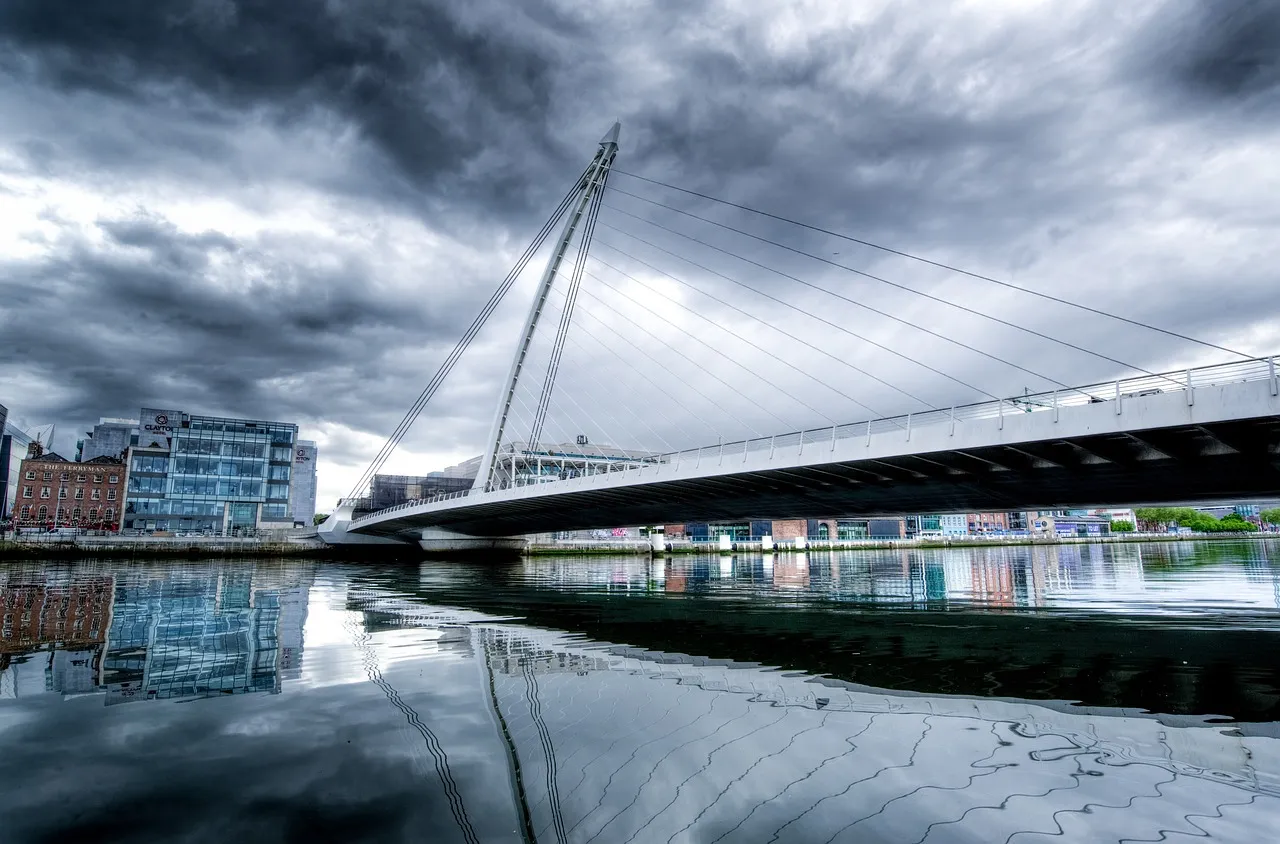🕐 Last updated: February 17, 2025
As the capital of Ireland, Dublin is home to a vibrant history and a strong literary culture. A striking example of these two aspects merging in the urban landscape is the Samuel Beckett Bridge, which honours one of Ireland's most renowned playwrights while showcasing an impressive feat of engineering.
In this article, we look at the bridge's history and architectural design, examine Samuel Beckett's connection to Dublin, compare it to similar structures around the globe, and provide directions for reaching the bridge from O'Connell Street.
The History of the Samuel Beckett Bridge
The Samuel Beckett Bridge, which officially opened in December 2009, was designed by internationally acclaimed architect and engineer Santiago Calatrava. Born in Spain, Calatrava has designed numerous iconic structures around the world, with bridges being one of his specialties. The Beckett Bridge spans the River Liffey, connecting Sir John Rogerson's Quay on the south side to Guild Street and North Wall Quay on the north side.
The bridge's unique design, resembling a harp lying on its side, pays tribute to Ireland's national emblem. This cable-stayed, steel structure features a 120-meter long central spine supported by 31 cables that gracefully fan out from a 48-meter high curved pylon, creating a visually striking appearance.
Samuel Beckett and His Significance to Dublin
Samuel Beckett (1906-1989) was a Nobel Prize-winning Irish playwright, novelist, and poet who is best known for his avant-garde and minimalist works. Born and raised in Dublin, Beckett's connection to the city runs deep. He attended Trinity College Dublin, where he studied French, Italian, and English, and later spent time living and working in Paris. Among his most famous works are the plays "Waiting for Godot" and "Endgame," as well as the novel "Molloy".
The Samuel Beckett Bridge serves as a fitting tribute to this literary icon, symbolizing the link between his Dublin roots and his international success. The bridge's name also reflects the surrounding area's theme of honoring other Irish literary figures, as several nearby bridges are named after prominent Irish writers such as James Joyce and Sean O'Casey.
Similar Bridges in the World
The Samuel Beckett Bridge shares similarities with other Calatrava-designed bridges worldwide. One notable example is the Puente de la Mujer in Buenos Aires, Argentina, which also boasts a unique, asymmetrical cable-stayed design. Another similar structure is the Sundial Bridge in Redding, California, which, like the Beckett Bridge, elegantly combines form and function.
How to Get There
The Samuel Beckett Bridge is located in the Docklands area of Dublin, along the River Liffey. To reach the bridge from O'Connell Street, the quickest way is to walk south towards the river and cross via the O'Connell Bridge. Then, head east along the south bank of the river on Aston Quay, which becomes Sir John Rogerson's Quay as you continue walking. The Samuel Beckett Bridge will be approximately a 20-minute walk from O'Connell Street, providing a pleasant stroll through Dublin's city center.
